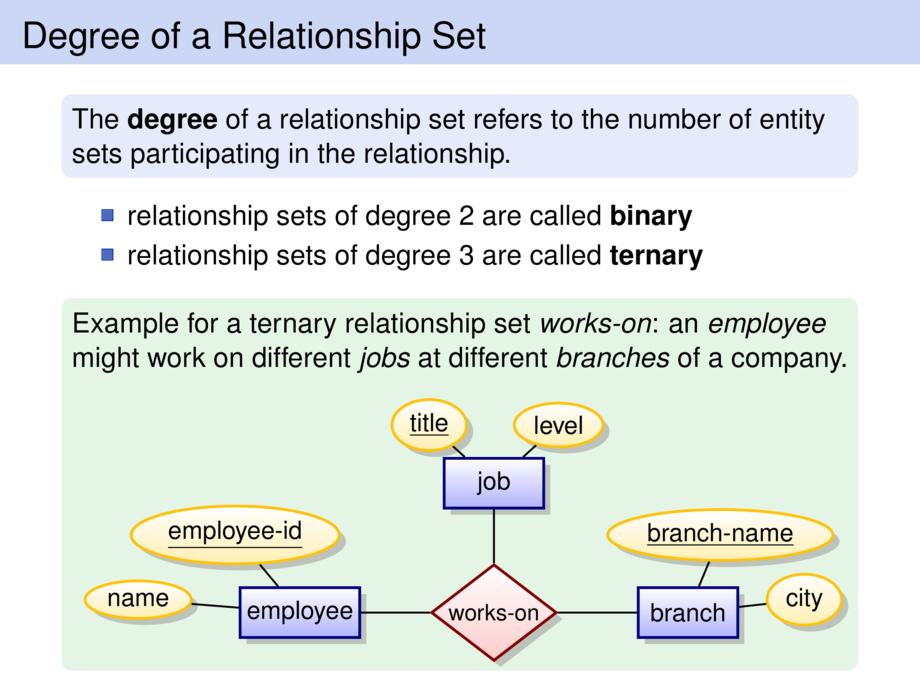



































































































20/98
\begin{frame}
\frametitle{Degree of a Relationship Set}
\begin{block}{}
The \emph{degree} of a relationship set refers to the number
of entity sets participating in the relationship.
\end{block}
\begin{itemize}
\item relationship sets of degree 2 are called \emph{binary}
\item relationship sets of degree 3 are called \emph{ternary}
\end{itemize}
\begin{exampleblock}{}
Example for a ternary relationship set \textit{works-on}:
an \textit{employee} might work on different \textit{jobs} at different \textit{branches}
of a company.
\begin{center}
\scalebox{.9}{
\begin{tikzpicture}[every edge/.style={link}]
\node[entity] (employee) {employee};
\node[attribute,at=(employee),shift={(-1cm,1.2cm)}] (employee-id) {\key{employee-id}} edge (employee);
\node[attribute,at=(employee),shift={(-2.5cm,0.2cm)}] (name) {name} edge (employee);
\node[entity,right of=employee, node distance=6cm] (branch) {branch};
\node[attribute,at=(branch),shift={(.5cm,1.2cm)}] (branch-name) {\key{branch-name}} edge (branch);
\node[attribute,at=(branch),shift={(1.8cm,.2cm)}] (city) {city} edge (branch);
\node[entity,right of=employee, node distance=3cm,yshift=2cm] (job) {job};
\node[attribute,at=(job),shift={(-1cm,.9cm)}] (title) {\key{title}} edge (job);
\node[attribute,at=(job),shift={(1cm,.9cm)}] (level) {level} edge (job);
\node[relationship,scale=.9,aspect=1.3] (works-on) at ($(employee)!.5!(branch)$) {works-on} edge (employee) edge (branch) edge (job);
\end{tikzpicture}}
\end{center}
\end{exampleblock}
\end{frame}

